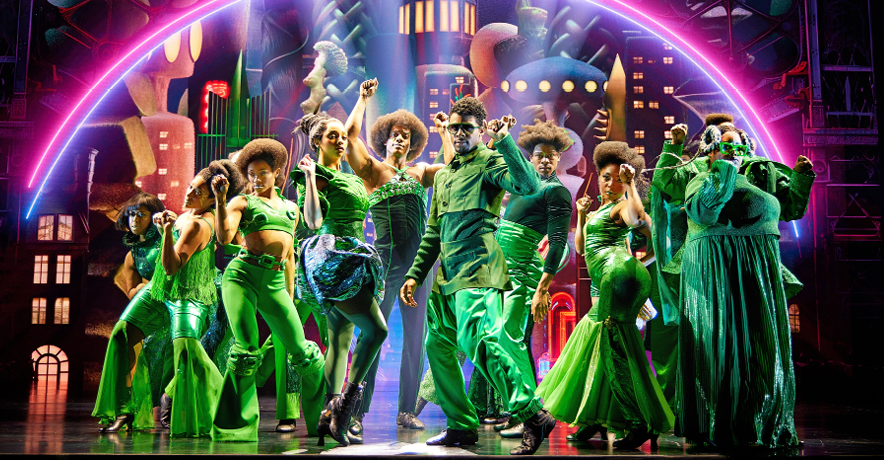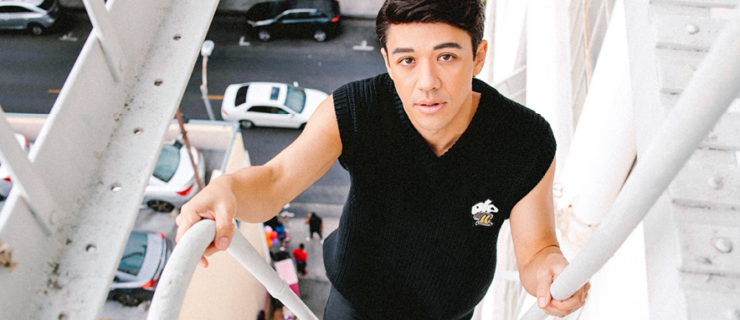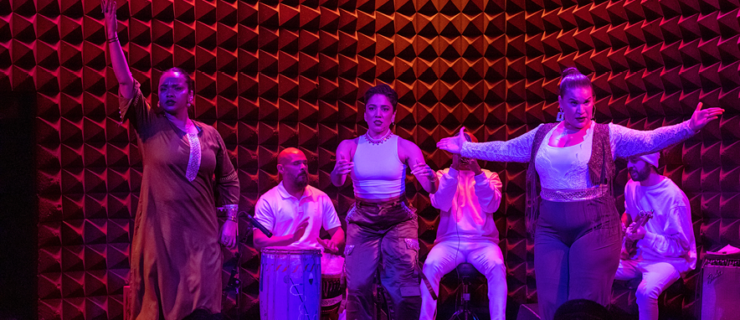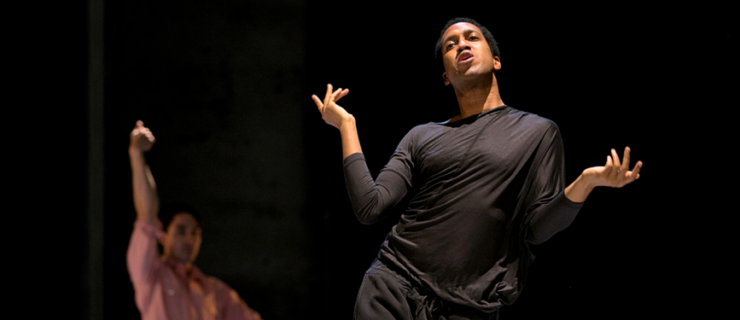The Wiz Returns to Broadway Nearly 50 Years After Its Premiere With More Dance Than Ever
JaQuel Knight has squeezed so many genres of dance into the long-awaited revival of The Wiz—fresh off a pre-Broadway national tour, and opening at the Marquis Theatre this month—that he finds it easier to share the only style he didn’t include.
“There’s a little bit of everything,” he says. “Tap is probably the only thing we don’t have.”
It may be an exaggeration, but not by much. In the show’s ballet- and contemporary-inspired tornado scene, a storm of dancers destroys Dorothy’s home and sends her off to Oz. Once she gets there, she’s swept up in a New Orleans–style second line that leads her down the Yellow Brick Road, where she meets a Tinman who pops-and-locks. Eventually, she is ushered into the Emerald City amongst a dizzying array of dances from the Black diaspora, from street styles out of Atlanta to Afrobeats to the South African amapiano.
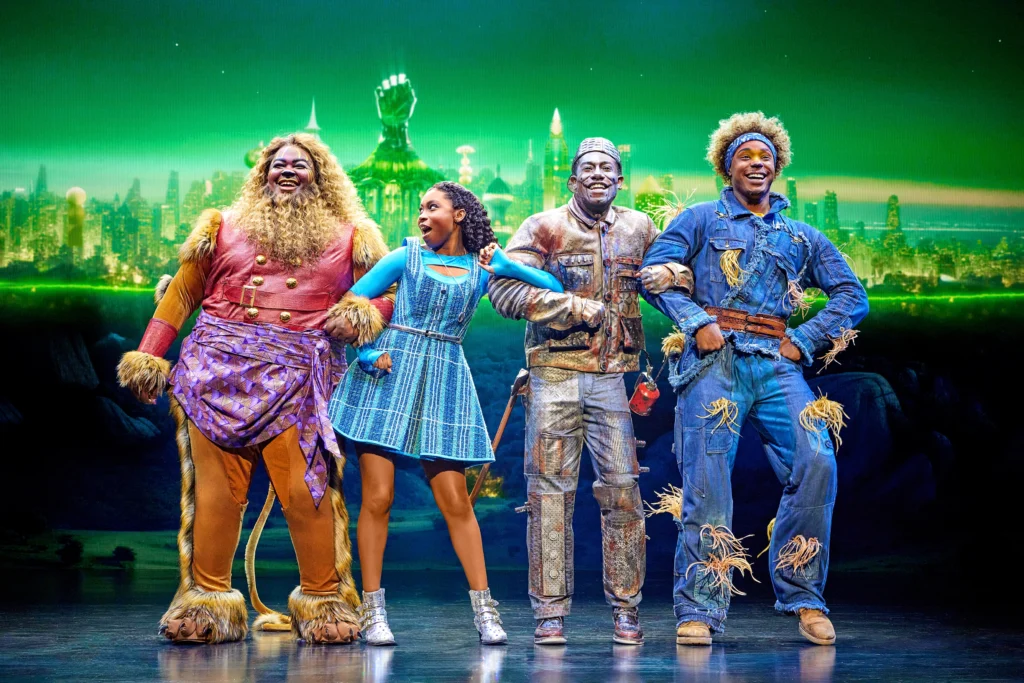
Though The Wiz may have one of the most versatile casts of dancers on Broadway right now—and, in Knight, a choreographer who has shown from his expansive commercial career that he can do pretty much anything—the show’s pull-out-all-the-stops movement isn’t about showing off. Instead, it’s a form of placemaking, says director Schele Williams, grounding Dorothy in elements of Black culture as she journeys through Oz and back home again.
“I liken Dorothy’s journey to a walk through the woods,” she says. “You can turn a corner, and it’s a gorgeous meadow. And then you can go another 40 yards and all of a sudden there’s a lake. Every turn, you can be in a new location with its own set of rules. It gives us permission to fully immerse ourselves in a new location.”
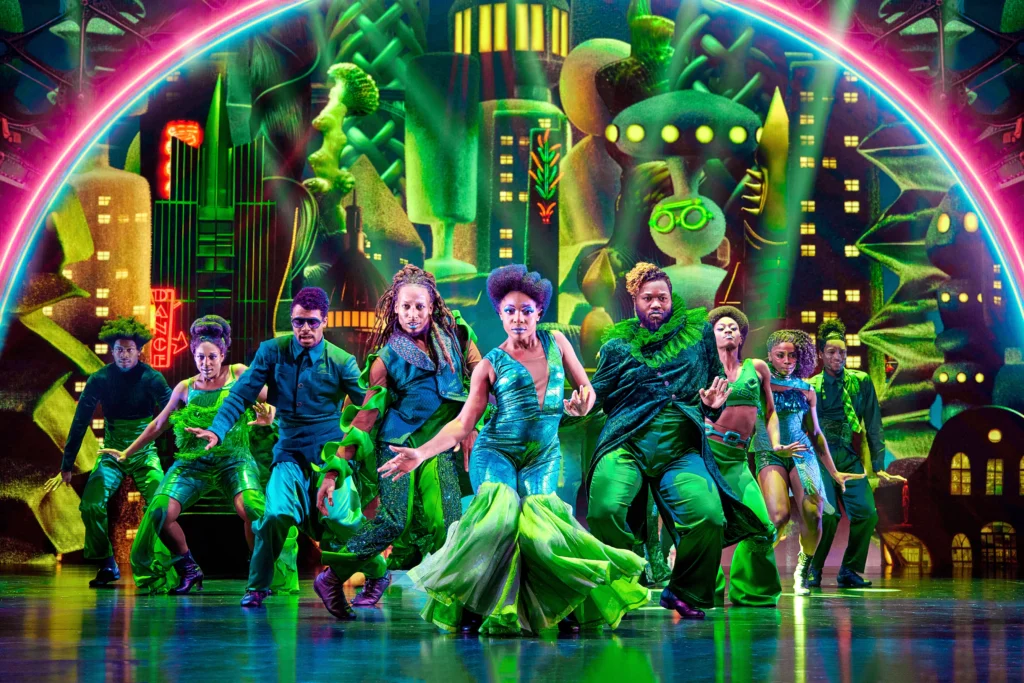
Tapping into his encyclopedic knowledge of dance genres to create a unique vocabulary was nothing new for Knight, who has spent years choreographing for top pop stars, most notably Beyoncé. What was new for him: the genre of musical theater, and the task of using those dances to tell a story.
And not just any story. The Wiz, a retelling of The Wonderful Wizard of Oz and a staple of Black culture, was revolutionary when it premiered in 1975 with choreography by George Faison, winning seven Tony Awards, including Best Musical and Best Choreography. A film adaptation starring Diana Ross and Michael Jackson, with choreography by Louis Johnson, came three years later. Several efforts to reignite a Broadway production have been in the works since, including a revival in 1984 that only lasted 13 performances, and another attempt in 2004 that never got off the ground.
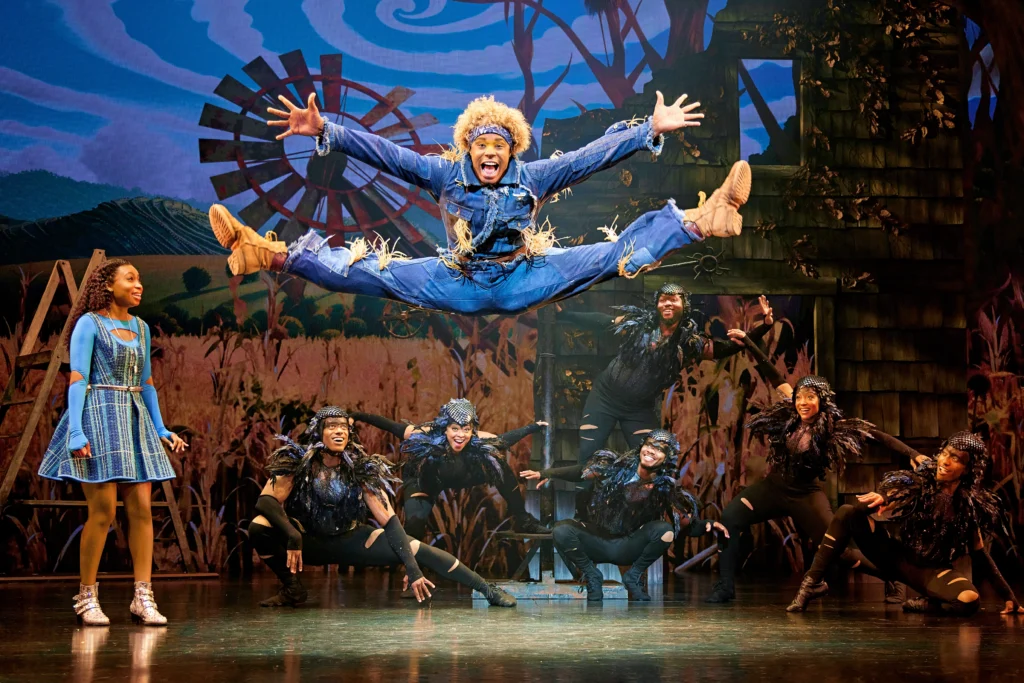
This time, The Wiz team predicts, will be different. Williams believes the world needs this show, with its joy-infused score and hope-filled message, right now. And by taking the production out of the ’70s and adding some contemporary innovations—in addition to Knight’s genre-bending choreography, there are updates to the book by comedian Amber Ruffin; costumes by Sharen Davis (of “Westworld,” “Watchmen,” and Dreamgirls); a dazzling set by Hannah Beachler, of Black Panther; and a modernized score by music team Joseph Joubert, Allen René Louis, Adam Blackstone, and Paul Byssainthe Jr.—they hope it will become timeless.
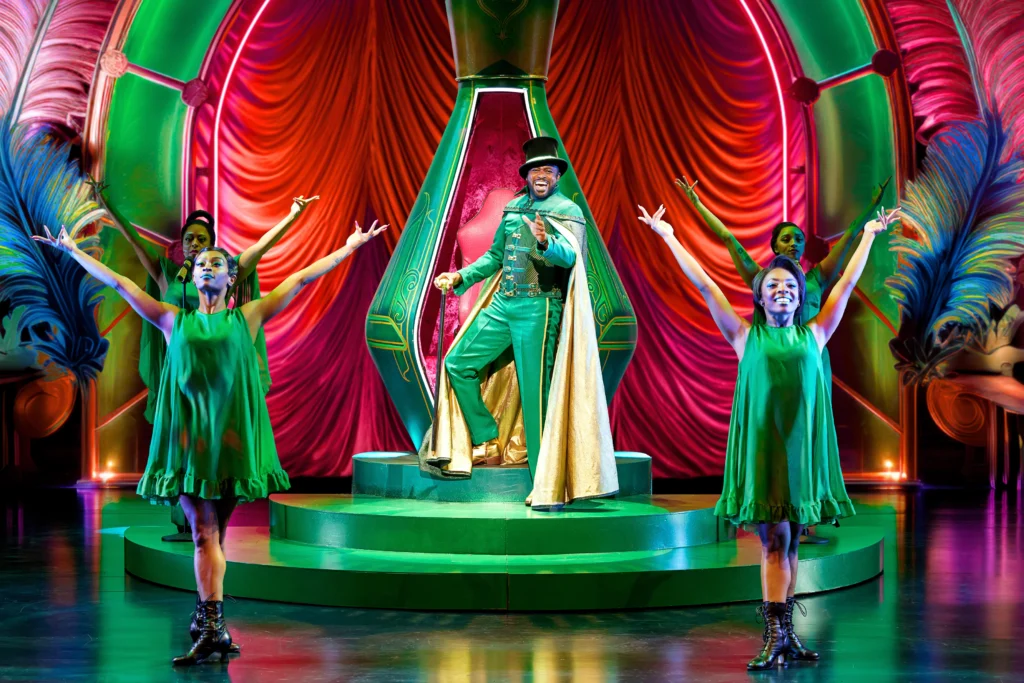
“I really wanted to create something that didn’t feel super ‘now,’ ” says Knight, “but takes you on a journey of Black dance. Throughout the show you see how these people live, how they move, how they celebrate, how they mourn, how they support each other, how they find a family.”
Knight began building the show’s choreography in October 2022. He workshopped movement in Los Angeles with some of his go-to commercial dancers. “I dreamed as big as I could,” Knight says. “For me, it was about, How do we keep the essence and energy of what George Faison did, and also bring JaQuel Knight to the table?”
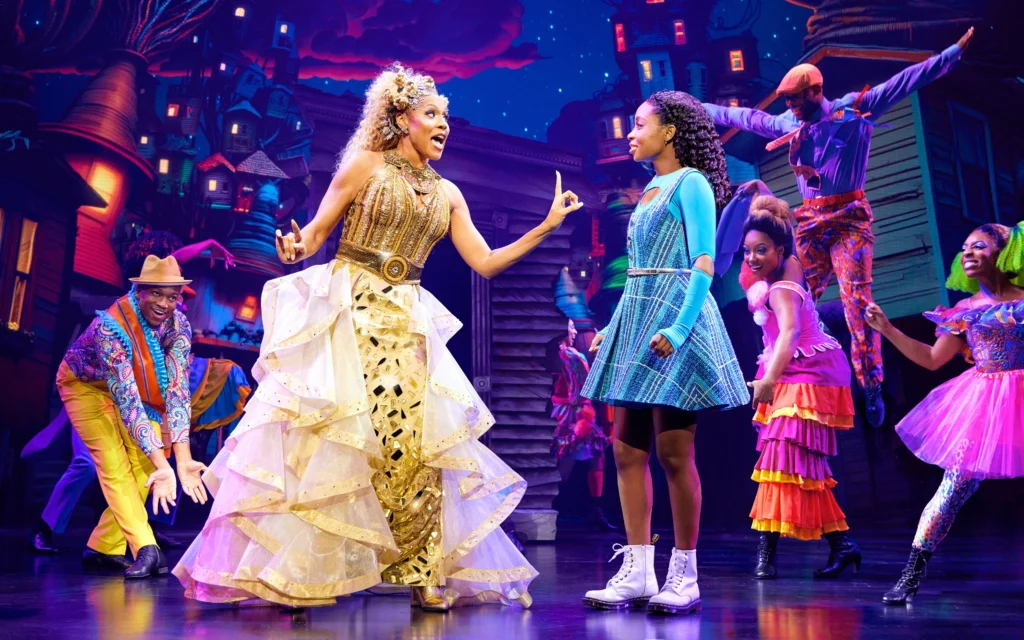
Broadway veteran and The Wiz dance captain Amber Jackson says the dance call was one of the most intense she’s experienced, with long, fast combos that constantly switched between styles, and rooms jam-packed with a who’s who of Black dance talent. A dance workshop with the chosen few—many of whom were Broadway newbies like Knight—followed, then rehearsals, then the national tour, then another round of rehearsals and tweaks before Broadway previews.
Reviews of the tour seem to agree that the production is highly entertaining, if a bit flashy. But as far as the choreography is concerned, nothing is flashy for flashiness’ sake. “I think the movement does a really beautiful job of not letting the audience feel detached from it,” says ensemble member Maya Bowles. “It’s not so codified in technique that it’s like, ‘That’s so impressive.’ It feels familiar. It feels like home. It feels like something that’s inherently in us as a Black community. It’s something you can be a part of. The invitation is open.”
From Beyoncé to Broadway
Theater was already on Knight’s bucket list when he got the offer to choreograph The Wiz, a call that, he says, made him “lose his mind.” Moving from commercial dance to Broadway presented a new opportunity: Knight, who is so often tasked with executing the vision of another artist—whether Beyoncé, Megan Thee Stallion, or Britney Spears—had a chance to discover his own vision. “I feel like I’m given room to explore my creativity and shape my voice as a movement artist,” he says. “And I’m enjoying that.”
Being new to theater, and therefore not beholden to ideas of how things are “supposed to be” done, has given Knight freedom to push the boundaries of what dance on Broadway can look like, says Phillip Johnson Richardson, who plays the Tinman. “He has the audacity to reinvent the whole thing,” Richardson says, “and not think of it like, ‘We can’t touch that, that’s classic material.’ ”
A New Kind of Tinman
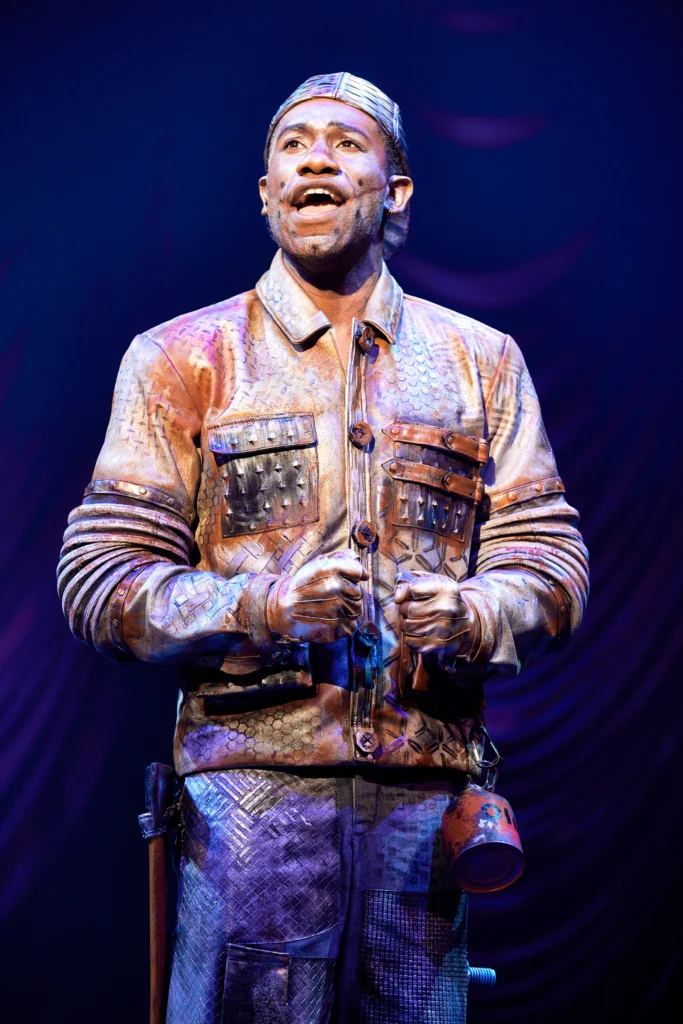
In most productions of The Wiz, during the song “Slide Some Oil to Me,” the Tinman shows off his newly lubricated joints with a tap dance. But in Knight’s interpretation, the dance break becomes a showstopping hip-hop moment that Richardson, who plays the Tinman, says revealed the whole character to him.
The movement—lots of popping, locking, and waving—felt familiar to Richardson, reminding him of dances he watched growing up. “It was like, ‘Oh, I know who this guy is,’ ” says Richardson. “ ‘And I know how I can approach this guy.’ It informed how I wear my hat—I was originally supposed to wear it to the front, and I was like, ‘Nah, he’d wear it to the back or the side.’ He’s a lot closer to me than I originally thought.”
